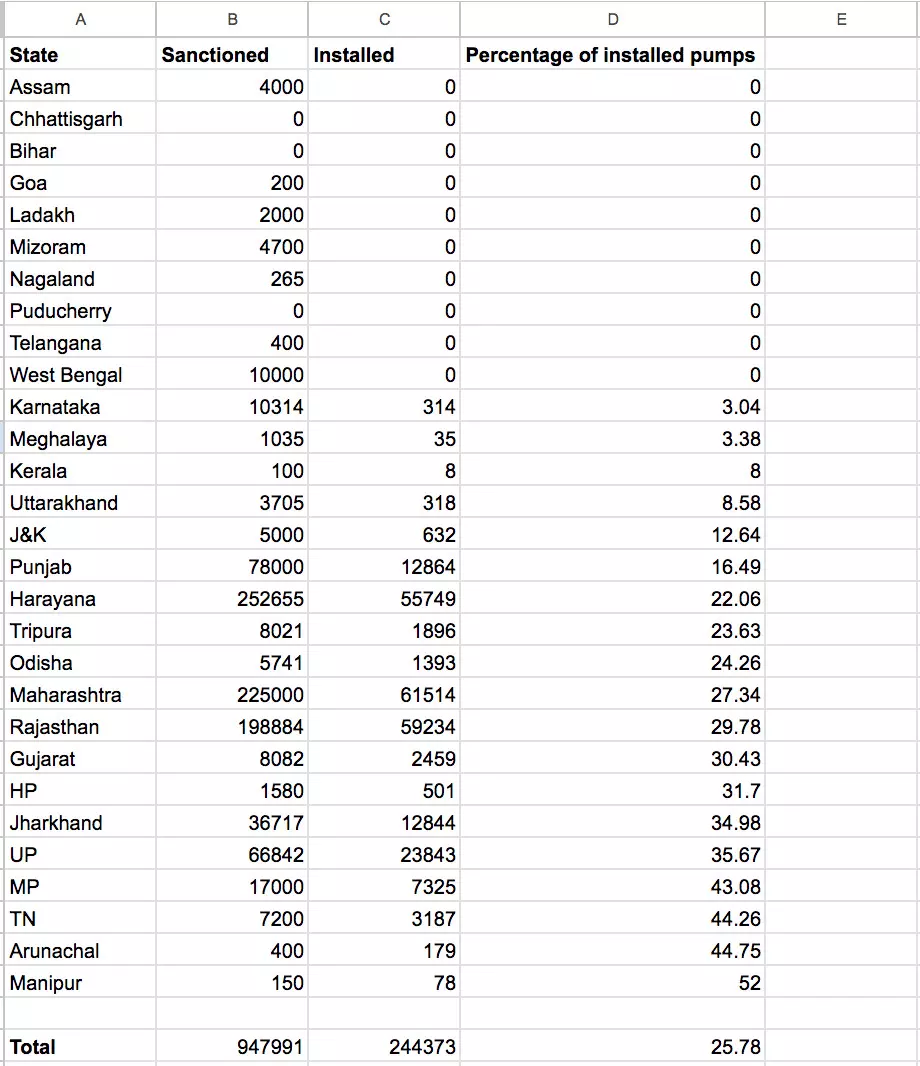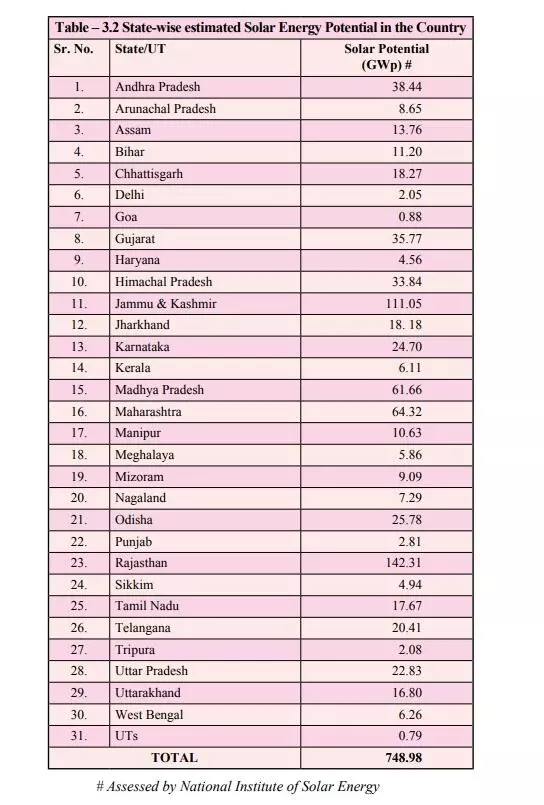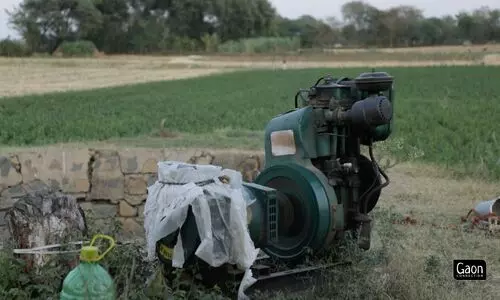According to an answer provided by Raj Kumar Singh, the Union Minister of New & Renewable Energy, in the Lok Sabha on July 20, it was found that amongst the 23 states where the solar irrigation pumps have been sanctioned, the installation of these pumps is less than 40 per cent in 19 states. Nationwide, only 25 per cent (244,373) of the total sanctioned 947,991 solar pumps have been installed till June 30, this year.
The percentage of installation of these pumps was calculated in reference to the sanctioned solar irrigation water pumps under the Pradhan Mantri Kisan Urja Suraksha Evam Utthaan Mahabhiyan (PM-KUSUM).

It is important to note that Bihar, Chhattisgarh and Puducherry have zero sanctioned solar-powered pumpsets. Also, the answer by the minister mentioned that Assam, Goa, Ladakh, Mizoram, Nagaland, Telangana and West Bengal have not installed even a single such pump till June this year.
It was also revealed that Maharashtra and Rajasthan have installed the highest number of pumps at 61,514 and 59,234 respectively, but these are just 27 per cent and 29 per cent of the total sanctioned pumps.
The southern state of Karnataka has installed only 314 pumps against the sanctioned 10,314 solar-powered pumps.
Uttar Pradesh whin limelight for being the hotspot of investment in the renewable energy sector, has so far installed 23,843 solar-powered pumps against a sanctioned 66,842.
Madhya Pradesh and Gujarat with high potential have been sanctioned only 17,000 and 8,082 pumps respectively. Meanwhile, no data was presented for the state of Andhra Pradesh which also has a considerable solar potential.

While taking stock of the solar irrigation pumps installed in Uttar Pradesh’s Bundelkhand under PM-KUSUM scheme, Gaon Connection had reported in April that small and marginal farmers are finding it hard to avail benefits.
In the report, these farmers who constitute up to 82 per cent of farmers in India, were found to be unable to afford the upfront cost of these solar-irrigation systems which are aimed at subsiding dependence on diesel pumps, reduce pollution, save costs, and help India achieve its goal of net zero greenhouse gas emissions by 2070.
Also Read: Can India’s solar irrigation scheme succeed without benefitting small and marginal farmers?
Case of Naresh Kumar from Mahoba
In Gaon Connection’s report, the case of Naresh Kumar, a farmer hailing from Bilbai village in Uttar Pradesh’s Mahoba district was cited.
“It costs me Rs 10,000 per annum to irrigate my acre of land,” the marginal farmer said. He would also not have to borrow money time and again to repair the diesel-run pumpset, which is what he said he has been doing.
Last year, Naresh Kumar could grow merely three quintals of chana (chickpea), one quintal of mustard and just enough food for his family, because he cannot afford to irrigate enough and rainfall patterns are getting erratic with every passing year.
“Last year, I only earned Rs 15,000 from the produce, and I have to provide for my family of five with that,” he had said.
The roadblock for the installation of solar powered irrigation pumps for small farmers like Naresh is the expensive initial investment as farmers have to contribute a lump sum amount between Rs 77,000 and Rs 250,000 for varying motor capacities.
It is farmers like Naresh who have been falling through the cracks when it comes to the implementation of the PM-KUSUM scheme. They constitute 82 per cent of the farmer base in the country.
Under the Central scheme, the beneficiary gets a 60 per cent subsidy (30 per cent each by the Centre and the state). The farmer also has to bear the borewell cost, over and above the remaining 40 per cent share.
Meanwhile the minister informed the Lok Sabha in the ongoing monsoon session of the Parliament that for better implementation of the scheme, it has been extended till March 2026. Also, earlier the sanctioned pumps had to be installed within 12 months, the time period for installation has been extended to 24 months from the date of initial sanction.




















